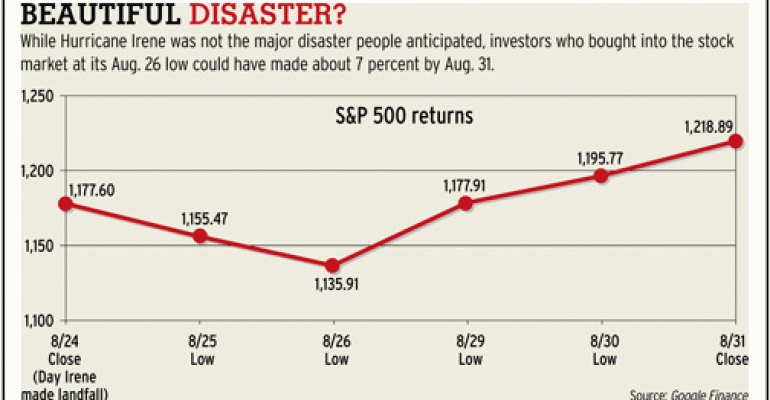The eastern U.S. has seen its share of natural disasters lately, between the magnitude 5.8 earthquake that hit Virginia on Aug. 23, and Hurricane Irene, which made landfall on Aug. 24. But according to Eric Zoldan, senior vice president of investments at JHS Capital Advisors, disasters have historically provided investors with an opportunity to take advantage of downside volatility in the markets. The shorter the duration in uncertainty surrounding the disaster, the shallower the downside effect to the markets, and vice versa, he said. Take Hurricane Katrina for example: On Aug. 29, 2005, the day it made landfall, the S&P 500 was at 1,212, and reached its shallowest level two months later at 1,168. By Jan. 9, 2006, the S&P was up to 1,290, a 10.4 percent gain if you bought at the low. “In each of these scenarios, any dip in the market prior to the end of the event has presented an opportunity to take advantage of downside volatility to rebalance,” Zoldan said.







